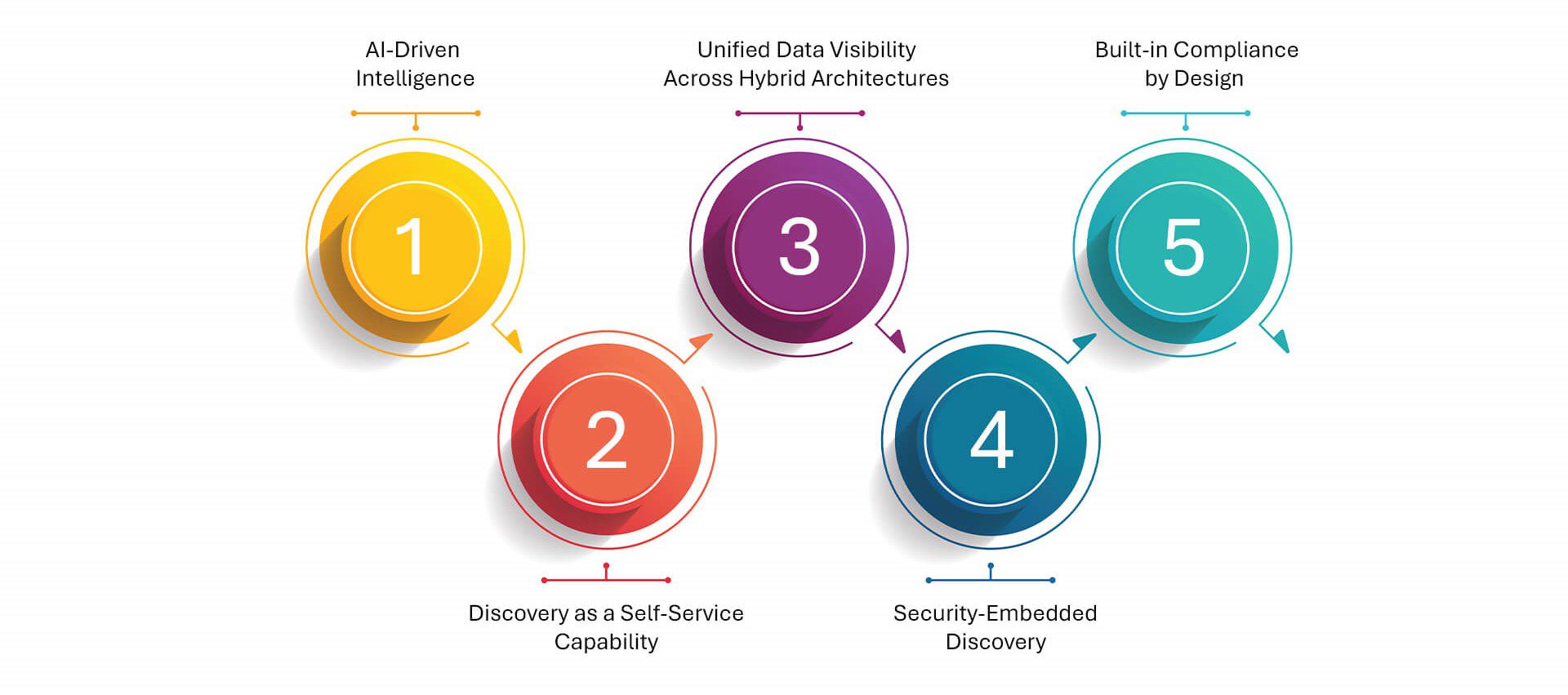What is Data Discovery?
Data discovery is the process of identifying, analyzing, and understanding data across an organization’s digital environment. It involves automatically locating data—structured, semi-structured, and unstructured—regardless of where it resides, then cataloging and contextualizing it for analysis, governance, or operational use.
Unlike traditional data search, which relies on users knowing what to look for, data discovery empowers organizations to uncover hidden data, relationships, and risks—often revealing valuable insights that were previously buried in silos or overlooked in legacy systems.
Why Data Discovery Matters
In the age of AI, regulatory scrutiny, and real-time decision-making, enterprises can no longer afford data blind spots. According to Gartner, poor data quality and visibility are among the top barriers to achieving successful digital transformation. IDC reports that over 80% of enterprise data remains unstructured and underutilized.
Data discovery addresses this challenge by offering visibility into data sprawl, exposing shadow data, enabling better classification, and laying the groundwork for downstream processes like analytics, compliance, and automation. It helps enterprises answer foundational questions: What data do we have? Where is it located? Who has access to it? Is it being used compliantly?
Key Components of Data Discovery
- Automated Scanning: Continuously scans diverse data sources—on-prem, cloud, and hybrid systems—to detect new or modified data.
- Metadata Extraction: Gathers contextual information about each data asset, including file types, owners, access history, sensitivity, and location.
- Data Classification: Uses predefined rules and AI/ML to categorize data by type, sensitivity, or business relevance.
- Lineage Mapping: Traces how data moves across systems, helping understand origins, transformations, and dependencies.
- Cataloging: Organizes data assets into searchable indexes, enabling easier access, tagging, and collaboration.
Challenges in Data Discovery

- Unstructured Data Overload: Most enterprise data today is unstructured—emails, PDFs, audio, images—making it difficult to parse, classify, or manage without advanced discovery tools.
- Siloed and Disparate Sources: Data is often spread across disconnected environments, applications, business units, or geographies, complicating efforts to locate and centralize it.
- Evolving Compliance Requirements: Laws like GDPR, HIPAA, and India’s DPDP Act demand greater transparency and accountability. Data discovery must keep up with jurisdictional variations and identify regulated data accurately.
- Performance and Scalability: Scanning and indexing petabytes of data in real time or across distributed architectures can be resource-intensive, requiring efficient, scalable platforms.
- Privacy and Security Risks: Exposing hidden or dark data can inadvertently surface sensitive information. Discovery tools must integrate with access controls and governance frameworks to ensure security-by-design.
The Way Forward: Evolving Data Discovery into a Strategic Capability

Overcoming the challenges of modern data discovery requires more than incremental fixes—it calls for a reimagination of how organizations treat visibility, governance, and intelligence at scale. The next generation of data discovery is not just about search—it’s about systemic understanding.
- AI-Driven Intelligence: Advanced discovery solutions now leverage AI and machine learning to intelligently parse unstructured content, identify sensitive data patterns, and adapt classification models in real time. This allows for deeper context, faster detection, and automated policy application across dynamic data environments.
- Unified Data Visibility Across Hybrid Architectures: With data scattered across on-prem, multi-cloud, and SaaS ecosystems, modern discovery platforms must offer unified dashboards and federated search capabilities. This ensures that even in a fragmented infrastructure, decision-makers get a single source of truth, without the need to move or replicate data.
- Built-in Compliance by Design: The future of data discovery is compliance-aware. Forward-looking platforms are integrating rule-based frameworks aligned with regional regulations, enabling continuous monitoring for regulatory breaches, automated mapping for data subject rights, and audit-ready traceability logs.
- Discovery as a Self-Service Capability: Empowering data owners and business teams to discover and act on their data—without going through IT bottlenecks—is unlocking agility. Self-service discovery democratizes data access while still maintaining strict governance, enabling faster innovation, better accountability, and decentralized data ownership.
- Security-Embedded Discovery: In Zero Trust environments, data discovery isn’t just a compliance function—it’s a frontline defense. Integrated with identity and access management (IAM), role-based access controls (RBAC), and security orchestration platforms, discovery tools now actively prevent unauthorized exposure of sensitive data during scanning or tagging processes.
Why Data Discovery Is the Catalyst for AI, Compliance, and Digital Transformation
In today’s AI-first, regulation-heavy, and digitally connected world, data discovery is no longer a backend utility—it’s a strategic imperative. It provides the visibility and context needed to fuel trustworthy AI, meet evolving compliance demands, and drive intelligent automation at scale.
AI models depend on clean, well-understood data. Without discovery, organizations risk training algorithms on flawed or non-compliant datasets. Similarly, compliance is moving from reactive audits to proactive governance, requiring real-time insight into sensitive data across hybrid environments.
More than anything, data discovery is the enabler of enterprise agility. It unifies fragmented data, empowers self-service intelligence, and bridges the gap between raw data and business value. For future-ready enterprises, understanding data is the first step toward leveraging it.
In a world where data is both a business enabler and a regulatory risk, data discovery is no longer optional—it’s strategic. Whether fueling AI, securing compliance, or driving operational intelligence, discovery is the first step toward responsible data usage.
Getting Started with Data Dynamics:
- Learn about Unstructured Data Management
- Schedule a demo with our team
- Read the latest blog: AI, Ethics, and Compliance: The Next Frontier in Global AI Leadership






